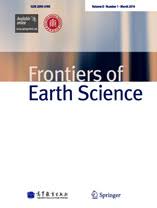Ver ítem
- xmlui.general.dspace_homeCentros Regionales y EEAsCentro Regional Patagonia NorteEEA BarilocheArtículos científicosxmlui.ArtifactBrowser.ItemViewer.trail
- Inicio
- Centros Regionales y EEAs
- Centro Regional Patagonia Norte
- EEA Bariloche
- Artículos científicos
- Ver ítem
Aeolian Remobilisation of Volcanic Ash: Outcomes of a Workshop in the Argentinian Patagonia
Resumen
During explosive volcanic eruptions, large quantities of tephra can be dispersed and deposited over wide areas. Following deposition, subsequent aeolian remobilisation of ash can potentially exacerbate primary impacts on timescales of months to millennia. Recent ash remobilisation events (e.g., following eruptions of Cordón Caulle 2011; Chile, and Eyjafjallajökull 2010, Iceland) have highlighted this to be a recurring phenomenon with consequences for
[ver mas...]
During explosive volcanic eruptions, large quantities of tephra can be dispersed and deposited over wide areas. Following deposition, subsequent aeolian remobilisation of ash can potentially exacerbate primary impacts on timescales of months to millennia. Recent ash remobilisation events (e.g., following eruptions of Cordón Caulle 2011; Chile, and Eyjafjallajökull 2010, Iceland) have highlighted this to be a recurring phenomenon with consequences for human health, economic sectors, and critical infrastructure. Consequently, scientists from observatories and Volcanic Ash Advisory Centers (VAACs), as well as researchers from fields including volcanology,
aeolian processes and soil sciences, convened at the San Carlos de Bariloche headquarters of the Argentinian National Institute of Agricultural Technology to discuss the “state of the art” for field studies of remobilised deposits as well as monitoring, modeling and understanding ash remobilisation. In this article, we identify practices for field characterisation of deposits and active processes, including mapping, particle characterisation and sediment traps. Furthermore, since forecast models currently rely on poorly-constrained dust emission schemes, we call for laboratory and field measurements to better parameterise the flux of volcanic ash
as a function of friction velocity.While source area location and extent are currently the primary inputs for dispersion models, once emission schemes become more sophisticated and better constrained, other parameters will also become important (e.g., source material volume and properties, effective precipitation, type and distribution of vegetation cover, friction velocity). Thus, aeolian ash remobilisation hazard and associated impact assessment require systematic monitoring, including the development of a regularly-updated spatial database of resuspension source areas.
[Cerrar]

Autor
Jarvis, Paul Antony;
Bonadonna, Constanza;
Dominguez, Lucía;
Forte, Pablo;
Frischknecht, Corine;
Bran, Donaldo Eduardo;
Aguilar, Rigoberto;
Beckett, Frances;
Elissondo, Manuela;
Gillies, John;
Kueppers, Ulrich;
Merrison, Jonathan;
Varley, Nick;
Wallace, Kristi L.;
Fuente
Frontiers in Earth Science 8 : art. 575184 (noviembre 2020)
Fecha
2020-11-27
Editorial
Frontiers Media
ISSN
2296-6463
Formato
pdf
Tipo de documento
artículo
Palabras Claves
Derechos de acceso
Abierto
 Excepto donde se diga explicitamente, este item se publica bajo la siguiente descripción: Creative Commons Attribution-NonCommercial-ShareAlike 2.5 Unported (CC BY-NC-SA 2.5)
Excepto donde se diga explicitamente, este item se publica bajo la siguiente descripción: Creative Commons Attribution-NonCommercial-ShareAlike 2.5 Unported (CC BY-NC-SA 2.5)


